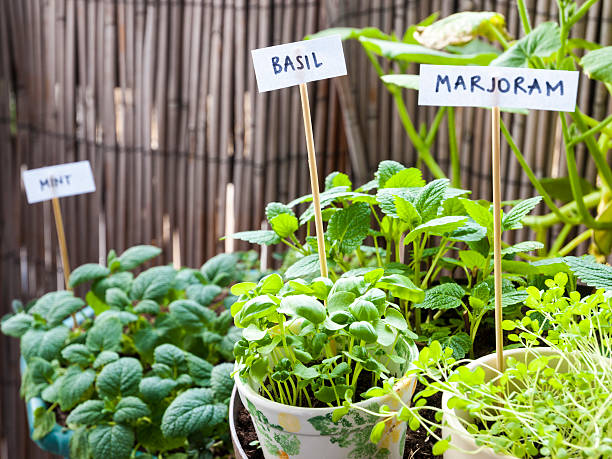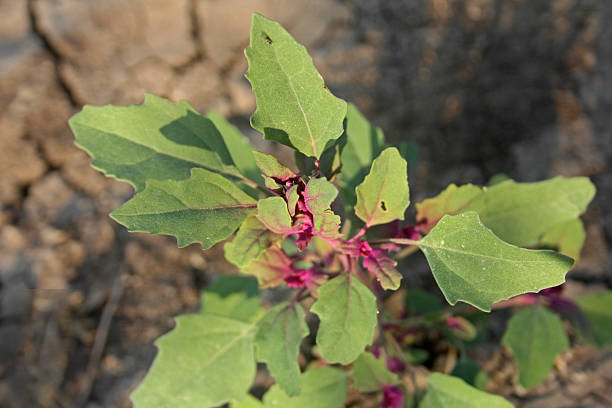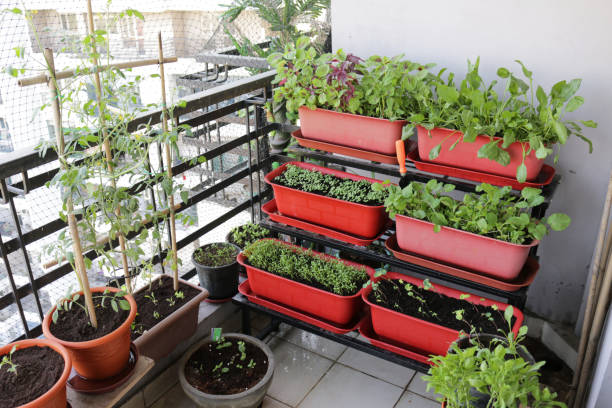Are you prepared to bring out the best in your culinary masterpieces? Envision a garden overflowing with aromatic and savory herbs outside your kitchen door. In this post, we’ll introduce you to some of the most flavorful and aromatic herbs for cooking. We’ll look at various best culinary herbs to grow, from the ubiquitous basil to the tangy cilantro, to learn about their individual qualities and how they stack up against one another.
Experienced cook here; I’ll tell you all I know about picking the best herbs for your cooking. Get set to take your meals to the next level of deliciousness and relish the pride of creating your culinary masterpiece. Put an end to using dried herbs from the grocery store and use fresh herbs from your garden instead.
Choosing the Best Culinary Herbs to Grow in Your Garden
Growing your spices at home not only adds a touch of freshness and flavor to your dishes but also elevates your cooking to a whole new level. Whether you have a sprawling garden or a small windowsill, cultivating culinary herbs is a rewarding and satisfying experience. Learn practical tips on selecting the best culinary herbs to grow in your garden.
Considerations for Selecting the Best Culinary Herbs to Grow based on Your Culinary Preferences
When selecting herbs for your culinary garden, it’s essential to consider your tastes and cooking preferences. Think about the types of cuisines you enjoy preparing and the flavors that complement them. If you love Italian dishes, basil and oregano are must-haves, while Thai cuisine enthusiasts may opt for lemongrass and Thai basil.
Consider herbs that pair well with your favorite proteins and vegetables, like rosemary for roasted meats or dill for fish dishes. Additionally, consider the space you have available for gardening and the climate in your region to ensure successful growth of your chosen herbs.
Assess the Available Space and Sunlight in Your Garden
For effective herb production, it’s important to evaluate the space and sunshine that are accessible in your garden. Observe your garden throughout the day to identify the areas that receive the most sunlight. Most culinary herbs thrive in full sun, requiring at least 6-8 hours of direct sunlight daily.

Once you’ve determined the sunniest spots, measure the available space to plan how many herbs you can grow. Consider using containers or raised beds if space is limited. Keep in mind that some herbs, like mint or parsley, can also tolerate partial shade, offering flexibility in your herb garden layout to accommodate varying sunlight conditions.
Understand the Growth Requirements of Different Best Culinary Herbs to Grow
Evaluate garden space and light conditions for successful herb production. Observe your garden throughout the day to identify the areas that receive the most sunlight. Most culinary herbs thrive in full sun, requiring at least 6-8 hours of direct sunlight daily.
Once you’ve determined the sunniest spots, measure the available space to plan how many herbs you can grow. Consider using containers or raised beds if space is limited. Keep in mind that some herbs, like mint or parsley, can also tolerate partial shade, offering flexibility in your herb garden layout to accommodate varying sunlight conditions.
Easy-to-Grow Culinary Herbs for Beginners
Growing herbs is a therapeutic hobby that connects you with nature and promotes well-being. Get ready for a tasty journey as we reveal the simplest to cultivate gourmet herbs for amateurs. These aromatic treasures are wonderful companions for your culinary endeavors, whether you are an experienced gardener or just starting out.
Basil: Versatile and Aromatic Herb for Various Dishes
Basil enhances flavor in dishes with its versatility. With its sweet and peppery notes, basil complements a wide range of cuisines, from Italian to Thai and beyond. It’s a key ingredient in classic dishes like pesto, Caprese salad, and tomato-based pasta sauces. This easy-to-grow herb also enhances the taste of soups, grilled meats, and even cocktails, making it a must-have in any culinary herb garden.
Mint: Refreshing Addition to Beverages and Desserts
The delicious and cooling plant mint adds a rush of freshness to drinks and desserts. With its refreshing aroma and flavor, mint is a popular choice for making refreshing summer drinks like mojitos and iced tea. It also pairs perfectly with desserts, such as ice cream, fruit salads, and chocolate treats, adding a touch of freshness to sweet indulgences. Growing mint in your garden ensures a constant supply of this versatile herb for your culinary creations.
Chives: Mild Onion-like Flavor Perfect for Garnishing
Chives are renowned for their mild onion-like flavor, making them a perfect garnish for many dishes. These slender, green herbs add a subtle yet delightful taste to salads, soups, omelets, and baked potatoes. Their delicate nature also makes them an excellent finishing touch for creamy sauces and dips. Growing chives in your herb garden ensure you always have this versatile herb on hand to elevate your culinary creations’ visual appeal and taste.
Parsley: Common and Flavorful Herb for Seasoning and Decoration

Parsley is a versatile herb used as seasoning and decoration. Its bright green leaves and mild, slightly peppery taste make it a versatile herb for enhancing the flavor of soups, stews, and sauces. Additionally, parsley adds a vibrant pop of color when used as a garnish for salads, roasted vegetables, and meat dishes. This kitchen staple is easy to grow in any herb garden.
Best Culinary Herbs to Grow in Your Garden: The Essential Mediterranean
Learn the secrets of Mediterranean cookery and bring its flavors home by cultivating these aromatic delights. Prepare to infuse your meals with the magic of the Mediterranean and enjoy the authentic flavor of “la dolce vita.”
Rosemary: Fragrant Herb for Roasted Meats and Vegetables
Rosemary enhances roasted meats and vegetable flavors. Its pine-like aroma and slightly woody taste complement dishes like roasted chicken, lamb, and potatoes. This versatile herb can be used fresh or dried, infusing the food with a delightful fragrance and flavor. A resilient plant, rosemary thrives in sunny spots with well-draining soil, making it a valuable addition to any culinary herb garden.
Thyme: Versatile Herb Suitable for a Wide Range of Dishes
Thyme is a versatile herb that brings a delightful earthy flavor to various dishes. With its small, aromatic leaves, thyme enhances the taste of soups, stews, and marinades. It pairs perfectly with roasted meats, poultry, and vegetables, adding a touch of warmth to the overall flavor. Thyme enhances flavor in dishes, fresh or dried, making it essential in the kitchen.
Oregano: Robust Flavor Ideal for Italian and Greek Cuisines

Oregano is a herb known for its robust and flavorful profile, making it an ideal choice for Italian and Greek cuisines. With its warm, slightly bitter taste, oregano adds depth to tomato-based sauces, pizza, and pasta dishes. It also pairs exceptionally well with grilled meats, fish, and vegetables. This easy-to-grow herb can be used fresh or dried, offering an authentic Mediterranean taste that will elevate your culinary creations to new heights.
Sage: Earthy and Savory Herb for Stuffing and Sauces
Sage enhances stuffing and sauce flavors. Its velvety, gray-green leaves add a distinct taste to poultry and pork dishes, particularly during the holiday season. Sage also complements rich and creamy sauces, elevating the taste of dishes like gnocchi and risotto. This resilient herb is a valuable addition to any herb garden, providing a burst of warm and aromatic goodness to your culinary endeavors.
Asian-Inspired Culinary Herbs to Grow
These fragrant delights, from the spiciness of Thai basil to the softness of lemongrass, are what make Asian cuisine what it is. Together, we’ll learn what these Asian herbs are and what they can add to your cooking as a true Asian twist. Find out how rewarding it is to raise these unusual plants and how your cooking will improve as a result.
Cilantro/Coriander: Bright Herb commonly Used in Asian and Latin American Dishes
Cilantro, also known as coriander, is a bright and aromatic herb commonly used in Asian and Latin American cuisines. Its fresh, citrusy flavor enhances the taste of dishes like salsa, curries, and stir-fries. Cilantro leaves are a popular garnish for tacos, soups, and salads, adding a burst of freshness to the overall dish. Both the leaves and seeds (coriander) are widely used in cooking, making cilantro a versatile and essential herb for various culinary creations.
Thai Basil: Anise-like Aroma for Thai and Vietnamese Recipes
Thai Basil is a herb with an anise-like aroma that is widely used in Thai and Vietnamese recipes. Its unique flavor profile adds a delightful twist to dishes like Thai curries, stir-fries, and spring rolls. Thai Basil also serves as a visually appealing garnish with its purple stems and green leaves. This herb is a must-have for those who enjoy authentic Southeast Asian flavors, bringing an exotic touch to your culinary adventures.
Lemongrass: Citrusy Herb often Used in Soups and Curries

Lemongrass enhances soups and curries with a lemony flavor. It is widely utilized in Asian cuisine, especially in Thai, Vietnamese, and Indonesian dishes. The herb’s tall, thin stalks contain essential oils that infuse the food with a refreshing, tangy taste. Lemongrass is known for its culinary and medicinal properties, contributing both flavor and potential health benefits to various recipes.
Chinese Chives: Garlic-flavored Herb for Stir-fries and Dumplings
Chinese chives, also known as garlic chives or Chinese leeks, are a flavorful herb commonly used in Asian cooking, especially in Chinese cuisine. They have a mild garlic taste and a delicate onion-like flavor. Chinese chives are popularly used in stir-fries and dumplings, adding a distinct and aromatic touch to these dishes. The leaves and stems of Chinese chives are edible, and their versatile nature makes them a staple ingredient in various recipes.
Exotic and Unique Culinary Herbs for Adventurous Gardeners
You may add an air of mystery and intrigue to your culinary creations by learning the best-kept secrets of growing and enjoying these uncommon delicacies. Let the excitement of discovery light a fire under your taste senses as you set off on a journey across the botanical world. Create a home for the extraordinary in your garden and a sanctuary for the most delicious surprises in your kitchen.
Saffron: Expensive but Highly Prized Herb for Flavor and Color
Saffron is a highly prized and expensive herb derived from Crocus sativus flower. It is known for its unique flavor and vibrant golden-red color. Often referred to as “red gold,” saffron is used sparingly due to its high cost. Distinct flavors and aromas enhance various dishes. For its culinary and medicinal properties, Saffron has been treasured for centuries in multiple cuisines.
Stevia: Natural Sweetener for Calorie-free Culinary Uses
Stevia is a natural sweetener extracted from the leaves of the Stevia rebaudiana plant. It is widely used as a sugar substitute due to its intense sweetness without adding calories. Stevia’s sweet compounds, called steviol glycosides, make it an attractive option for individuals seeking a calorie-free alternative to sugar. It is used in various culinary applications, including beverages, desserts, and baked goods, offering a way to sweeten foods without the added calories of regular sugar.
Epazote: Traditional Mexican Herb for Bean Dishes and Stews

Bean recipes and stews typically feature epazote as a traditional Mexican herb. Citrus, mint, and earthy undertones combine to create its signature scent. When people add epazote to meals consisting primarily of beans, they believe it alleviates flatulence and improves digestion. Black beans, pozole, and other Mexican soups all benefit from its incorporation into the cuisine. The addition of this fragrant herb to traditional Mexican dishes enhances the overall flavor.
Lemon Verbena: Lemon-scented Herb for Teas and Desserts
The name “Lemon Verbena” comes from the herb’s enticing citrusy perfume and flavor. People commonly use it to infuse teas and add a refreshing taste to desserts and beverages. The leaves of Lemon Verbena are rich in essential oils, providing a bright and zesty essence reminiscent of lemon. Herb enhances culinary creations, making it popular in cooking and baking.
Frequently Asked Questions
Q: What is considered as the herb king?
A: Due to its widespread use in cuisine, basil, sometimes known as the “king,” is a common ingredient everywhere from Asia to the Americas.
Q: Which herb grows most frequently in the Philippines?
A: In the Philippines, siling labuyo, a type of chilli pepper, is one of the most popular herbs because of how much heat it adds to dishes. People commonly use it in meals like adobo, a well-known dish made with chicken or pork marinated in vinegar and garlic, and sinigang, a sour soup made with tamarind.
Q: Which herb is the most valuable?
A: Saffron. It is the ideal crop for prospective home gardeners who want to see a significant return on their investment. Since antiquity, people have utilized it in food and medicine, and they regard its golden threads as some of the most priceless plants in the world.
Q: Which herbs are most difficult to grow?
A: Lavender is the most challenging herb to maintain, with 10,400 plant parents requiring monthly assistance. Popular herbs like coriander, dill, and parsley follow, closely followed by basil, mint, and rosemary.
Q: Which herb is the most adaptable for cooking?
A: In Western cuisine, people widely use parsley, a versatile herb with a mildly peppery flavor that pairs well with other flavors. Color and fresh flavor enhance salads, sauces, and meals.
Final Thoughts
The best culinary herbs to grow depend on personal preferences and culinary needs. However, some popular and versatile choices include basil, known for its fresh and aromatic flavor, ideal for pasta and pesto dishes. Rosemary adds a delightful savory taste to roasted meats and vegetables. Mint brings a refreshing twist to beverages and desserts.
Thyme offers a subtle earthy taste that enhances various recipes, from soups to grilled dishes. Chives bring a mild onion flavor, perfect for garnishing salads and baked potatoes. People use parsley, a versatile herb, for both flavoring and garnishing various dishes. Lastly, cilantro imparts a zesty touch to Mexican, Indian, and Asian cuisines. Growing these herbs at home ensures a ready supply of fresh, pesticide-free ingredients, elevating the overall culinary experience.

